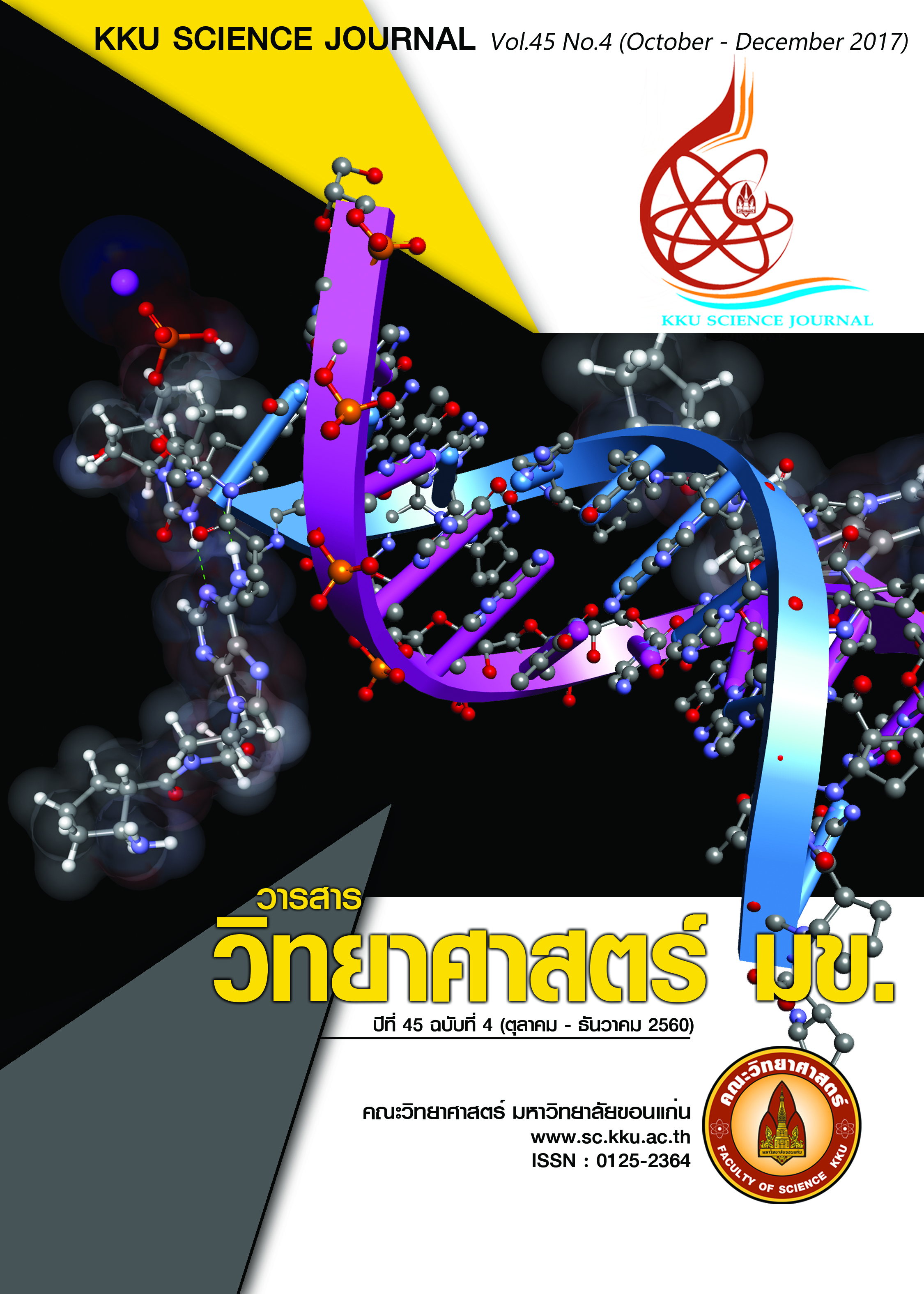Effect of Pretreatment Methods of Cassava Residue on Sugar Production
Main Article Content
Abstract
This research aims to study the effects of pretreatment methods of cassava residue on fermentable sugar production. The studied pretreatment methods included enzyme, acid, alkaline, acid and enzyme, alkaline and enzyme pretreatment methods. The results showed that alkaline and enzyme pretreatment method yielded the maximum fermentable sugar production of 49.50 g/L. Pretreating cassava residue with 2% w/v NaOH for 24h at 500C improved enzymatic sacharification about 3-fold when compared to sample pretreated with alkaline. In addition, the reducing sugar increased in 16.3-fold from samples treated with alkaline when using alkaline couple enzyme pretreatment. Because its abundance, low cost and high sugar conversion, cassava residue is a suitable feedstock for sugar production.
Article Details

This work is licensed under a Creative Commons Attribution-NonCommercial-NoDerivatives 4.0 International License.


